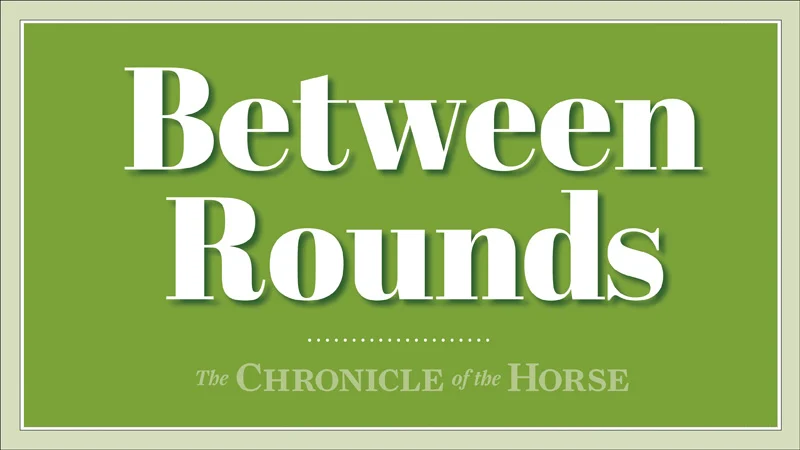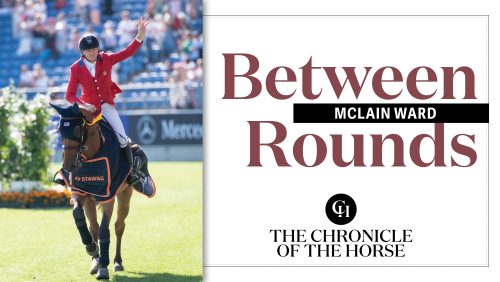Our columnist reminds us that respect and compassion for our equine partners are two critical components to equitation.
Years ago, George Morris wrote a Between Rounds column for The Chronicle of the Horse called “A History Lesson.” His message remains pertinent even 17 years later:
“The hunter seat equitation division can be no better or worse than the standard of the hunter division. These two divisions are inseparably intertwined, as they should be. We always took our top horses and riders from the hunter ring to the equitation ring, to the jumper ring and then to the team. This was the Ameri-can recipe for success.”
As Mr. Morris pointed out, the hunter and equitation divisions are “inseparably intertwined,” and as equitation has evolved into its own division, I believe that it’s imperative that we do not forget the “hunter” component that was its foundation.
Things change and evolve; that’s a fact of life. Certainly that’s happened in our equitation division in the 70 years since Mr. Alfred Maclay conceived of an equitation class that would “inspire young riders to develop the best horsemanship skills and instill in them respect and compassion for their equine partners.”
Often the most challenging aspect of change is to preserve the core values, what we call “the basics,” while still moving progressively forward.
The Specialist
The goal of judging equitation is to identify and reward riders whose qualities enhance the performance of their horses. Obviously, the rider must first be able to answer the expectations and problems posed in the class. Beyond the execution of the movements or the accurate negotiation of the obstacles, the judge is evaluating the qualities each rider possesses. The rider’s feel, balance, position and finesse will all impact his harmony with the horse.
The horse is said to be a perfect mirror of the rider, and as a judge, this thought needs to be in the forefront of our minds. Proper equitation should improve the horse’s performance. The hunter should be balanced and connected, with the freedom to use its head and neck to produce a better quality jump and should exhibit confidence in and rapport with its rider that makes it easily adjustable to the demands of the course.
The jumper should have the same confidence and bond with the rider in order to maintain the athleticism of its jump as it negotiates a trappy course at speed.
ADVERTISEMENT
In the first three or four decades of equitation competition, competitors who won the major finals did so just in passing; it wasn’t an accomplishment that their riding careers were centered around.
As the division has grown in popularity, the riders have become specialists who can meet the demands of this division very well. Yet fewer of them are capable of moving seamlessly between the hunter, equitation and jumper rings as the previous generations did.
Even more distressing is that the horses are often trapped in this limbo of being neither a hunter nor a jumper, but rather an equitation specialist. Certainly the demands of today’s equitation courses ask more of the horse than just being able to canter around over eight to 10 jumps all set on distances related to its normal stride.
But when our judging rewards performances that don’t protect the quality and athleticism of the horse’s jump, then we’ve strayed a long way from the horsemanship skills and respect for our equine partners that were the inspiration for this type of competition.
Figure skating, gymnastics and springboard diving have all recently adopted new judging systems that separate the technical components of a performance from those that define the artistic elements. We say that riding is part science and part art, so it’s important that equitation judges be conscious of these two elements just as figure skating judges must be.
The technical execution of the test is easily seen, but the horse has a lot to tell us about the rider’s artistic ability.
So often today, I see that at many shows around the country the technical aspects are being overemphasized in judging equitation, and the quality of the horse’s performance isn’t a factor in the judge’s evaluation.
If the rider who executes the track the most precisely does so at the expense of following the horse’s head and neck gesture in the air, then we’ve lost sight of the goal. A horse that turns tightly but due to the rider’s inadequate release cannot jump with the bascule we’re looking for in the hunter ring or is so inverted that it could easily pull a hind rail in the jumpers. This isn’t the performance we want to be rewarding in equitation classes.
We have to stay true to our heritage of riding with the horse’s motion. Obviously, as the demands of our equitation courses have become more sophisticated, riders need to appreciate and use real flatwork and traditional gymnastic schooling to enhance their horsemanship.
It’s An Art Too
ADVERTISEMENT
The new standards should be pushing our riders to become better and more complete horsemen rather than specialists with the narrow focus of winning this or that equitation finals. As teachers and trainers, this heritage is our responsibility. But if our judges aren’t reinforcing these values, then our jobs become more difficult.
We all know that what “wins” becomes the new style, so what’s winning in the equitation ring on a day-to-day basis (not just at the finals) should be the rider who, through his or her abilities, can help the horse produce the best possible performance it’s capable of giving.
When you’re judging or observing an equitation class, watch the partnership. If the horse looks relaxed, confident and happy, while also putting in a good technical performance, then chances are the rider is doing a great many things correctly.
Horsemanship is an art that can be infinite in its refinement and subtlety but only if the rider is aware and conscious of the horse at every moment. Much compassion is needed in the rider because the horse mirrors the rider’s mental state. The way in which an individual rides is generally a reflection of his or her purpose: win the blue ribbon, beat my friend, help my horse through this challenge, hope for the best, enjoy the experience, and so on.
Don’t lose sight of the horse when you’re judging or coaching equitation. What he has to tell you about his rider should influence you as you determine your placings or your instruction.
When a horse isn’t going well, true horsemen will first and foremost look inward. They’ll ask themselves where they might be lacking in refinement or understanding, so they can improve their communication and encourage their horse to become comfortable and confident in what’s being asked.
Alfred Maclay wanted equitation to “instill respect and compassion for their equine partners” into young riders. This goal should be the true purpose of our equitation division.
Once again, to quote George Morris: “The first rule of good horsemanship, or the definition of horseman/woman, is the love of horses.”
Don’t forget to watch the horses to see if a true horseman or horsewoman is being reflected.
Shelby French has been the director of riding at Sweet Briar College (Va.) since 2000. Previously, she served in the same position at St. Andrews College (N.C.) for 16 years. She’s a USEF R-rated judge and has coached and trained hunters, jumpers and equitation riders on the A-rated circuit throughout the Southeast. She serves on the Board of the American National Riding Commission and the U.S. Hunter Jumper Association.”















